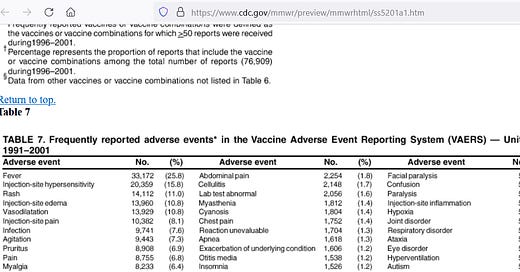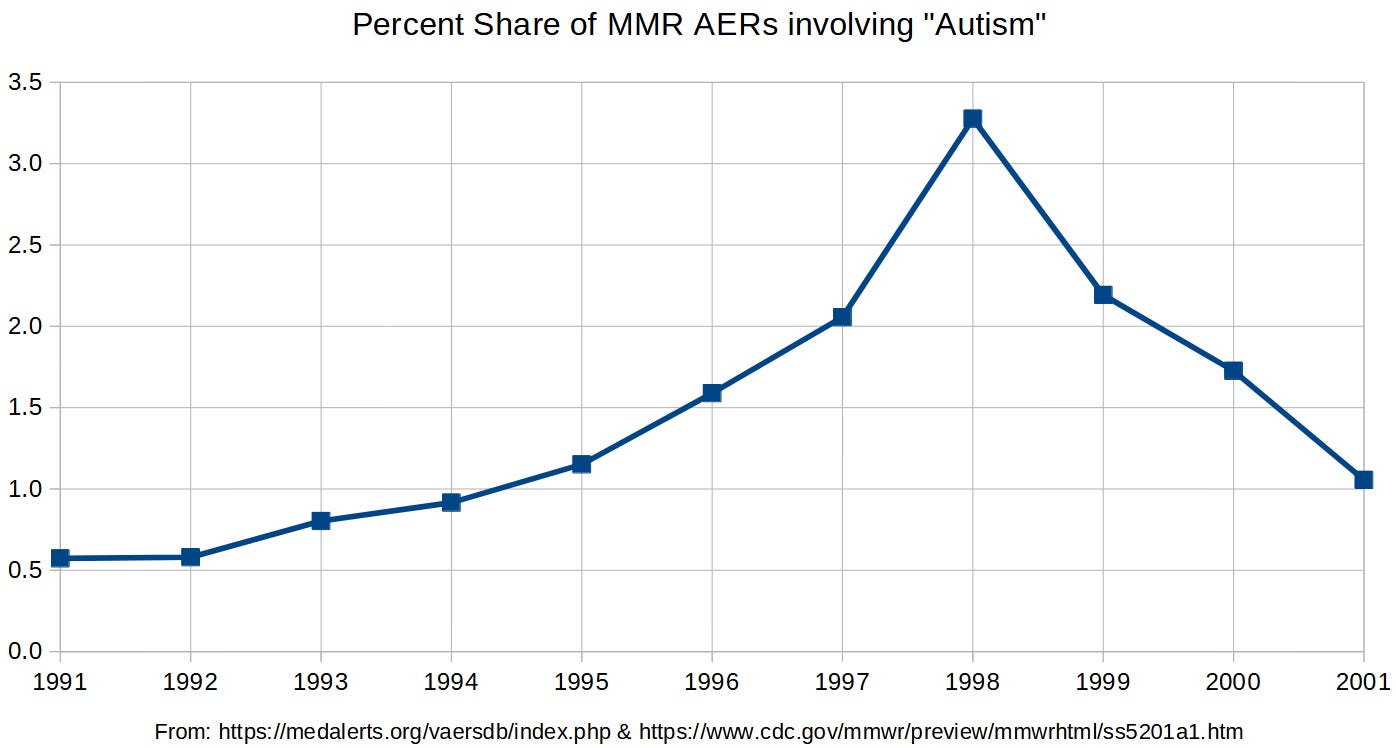NOTE: This post extends and corrects this earlier post.
When the share of all adverse event reports made up by a target adverse event for a target vaccine is twice as high as the share of that event for all reports for all other vaccines, then it throws a safety signal. The reporting share of all events made up by autism for all vaccines is 0.41% (bottom right):
But MMR and MMRV vaccines reached over twice that share of 0.41% by 1994 — four years prior to the pivotal 1998 Wakefield et al. study suggesting a link between MMR vaccines and autism:
In other words, before Andrew Wakefield came out with a warning that there is a possible link between MMR and autism, the CDC had — for 4 years — been sitting on evidence which also would suggest that that link is possible, because the method they use (look for PRR = 2 or more) would have alerted them by 1994 of a safety signal.
The true proportional reporting ratio (PRR) would be a little higher than what shows up in column R below, because PRR actually separates one vaccine from all others, while the overall share of 0.41% is a share which includes MMR vaccines with all others. This leaves it open as to whether the PRR signal of 2 or more occurred in 1993.
But it had definitely occurred by 1994, as shown below using the conservative measure.
NOTES:






